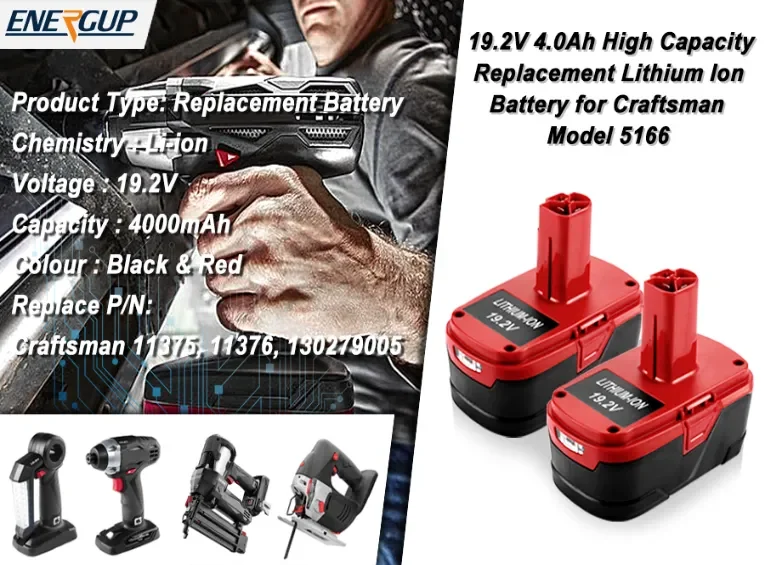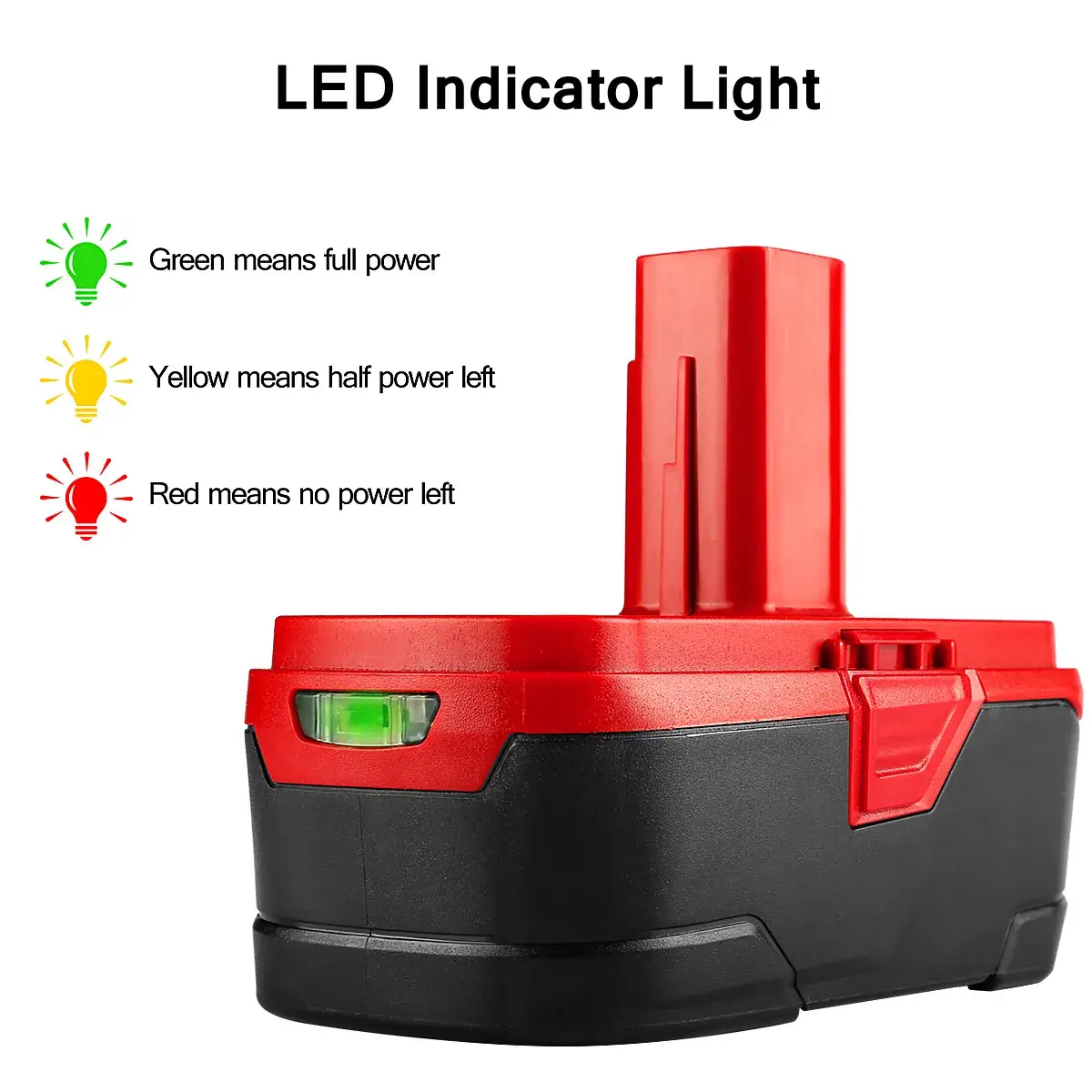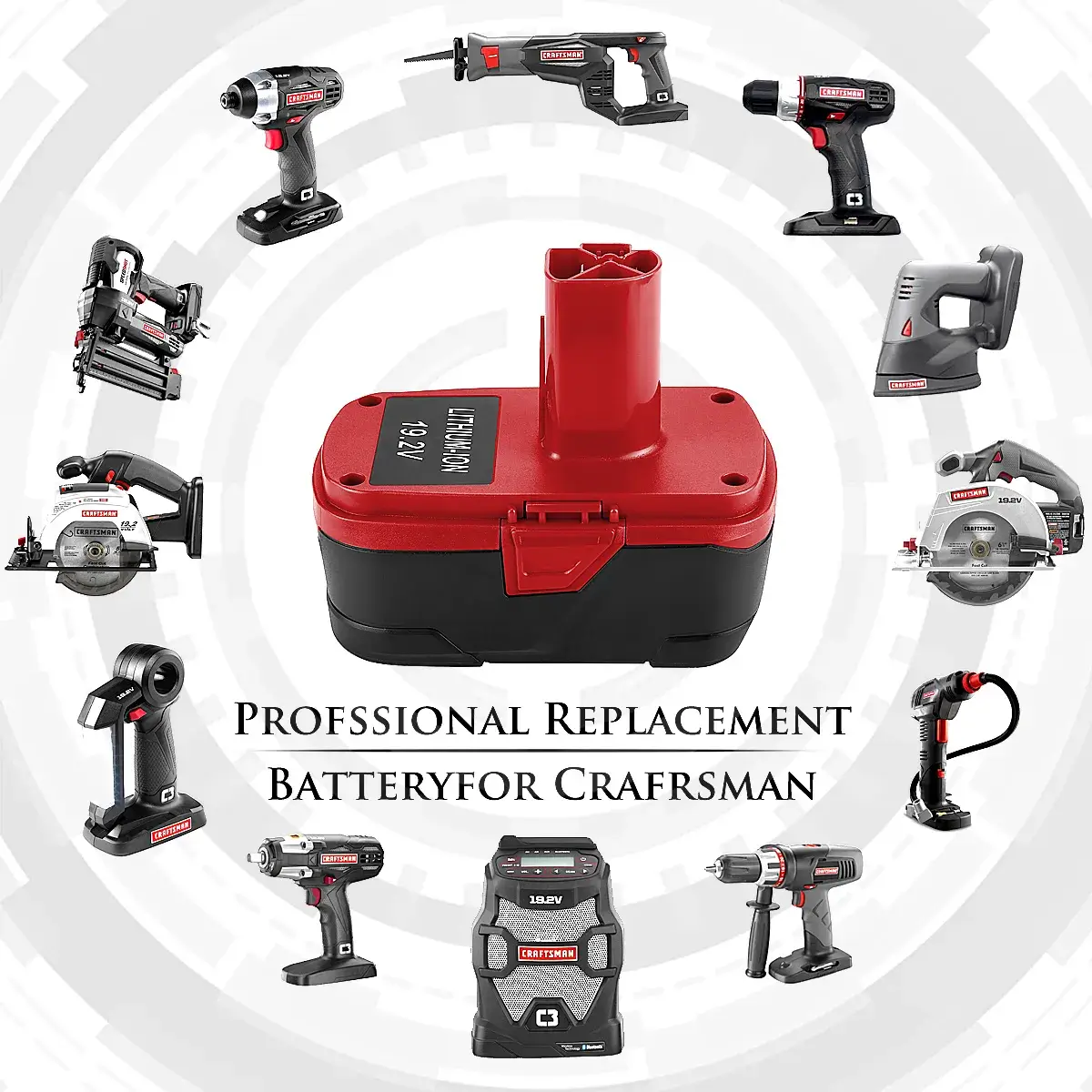What Are the Best Craftsman 19.2V Battery Upgrade Options?
Upgrading your Craftsman 19.2V battery setup can significantly improve productivity, reduce downtime, and lower long-term costs. The key is to align your tool’s requirements with the appropriate battery chemistry, capacity, and charging strategy while maintaining safety and reliability.

What Should You Know Before Starting a Battery Upgrade?
Before attempting any battery upgrade, it’s crucial to gather detailed information about your current setup and usage patterns. Understanding the baseline performance will help you measure the effectiveness of any changes and ensure compatibility with your tools and chargers.
How Do You Identify Your Battery Specs?
Start by checking the pack label for voltage, chemistry (NiCd, Li-ion, or NiMH), and amp-hour (Ah) rating. Record the nominal voltage, cell count, and manufacturer specifications. This knowledge ensures you select an upgrade that matches your tool’s requirements without overloading its electronics or violating safety limits.
How Can You Check Tool and Charger Compatibility?
Verify that your charger can safely handle the chemistry and capacity of the new pack. Using an incompatible charger can damage both the battery and the tool. For Li-ion upgrades, confirm that the charger supports smart BMS communication and overcharge protection.
Why Record a Baseline Runtime?
Measure how long your current battery lasts from full charge to tool cutoff under normal working conditions. Document runtime, voltage under load, and temperature during use. This baseline allows you to quantify improvements after upgrading and helps detect early signs of battery degradation.
Should You Buy a Higher-Capacity OEM or Aftermarket Pack?
Upgrading to a higher-capacity pack increases runtime, but quality and safety are paramount. Selecting the right pack requires balancing energy, weight, cost, and reliability.
What Criteria Should You Use When Selecting a Pack?
Focus on Grade-A cells from reputable brands such as Panasonic, Samsung, or LG, and ensure the BMS includes over-charge, over-discharge, over-current, and thermal protections. Confirm that the pack physically fits your tool and that the terminals align correctly with the charger. Avoid cheap, uncertified units with unknown cell provenance.
What Are the Pros and Cons?
Higher-capacity packs provide longer runtime and reduce downtime, especially in professional or prolonged tasks. However, they are heavier and may slightly alter tool ergonomics. Low-quality aftermarket packs may fail quickly or cause unsafe conditions, so weigh cost savings against reliability.
How Can You Confirm Safety and Fit?
Before regular use, verify voltage, physical dimensions, and terminal design. Test the pack on the original charger to ensure proper handshake and charging. Monitor initial charge temperature and runtime for unusual sag or overheating. Return or replace any pack that exhibits abnormal behavior.

Can You Swap from NiCd to Li-ion Chemistry?
Switching from NiCd to Li-ion can greatly improve performance, but it is not a simple drop-in replacement. The chemistry, voltage curves, and charging requirements differ.
What Are the Benefits of Li-ion?
Li-ion packs offer 30–50% longer runtime, significantly lower self-discharge, and lighter weight for improved ergonomics. They maintain voltage more consistently under load, making them ideal for demanding tasks. Reduced maintenance and the absence of memory effect make them more convenient for intermittent use.
What Challenges Might You Face During Conversion?
NiCd chargers cannot safely charge Li-ion packs, so a compatible Li-ion charger is necessary. Ensure that your tool’s voltage tolerance aligns with the Li-ion pack to avoid triggering BMS cutoff or damaging electronics. Adapters or mod kits should only be used when certified and tested.
What Are the Safest Conversion Options?
The most reliable method is to purchase complete Li-ion replacement kits from reputable manufacturers or certified rebuilders. These packs include protection circuits tailored to the chemistry, minimizing risk of thermal events or cell damage.
Is Rebuilding or Cell Replacement Worth It?
Rebuilding a battery pack can be cost-effective if the enclosure and electronics are intact, but requires expertise.
When Should You Rebuild Instead of Replace?
Rebuild only when the housing, BMS, and connectors are in good condition. Replace the pack if the shell is cracked, BMS is obsolete, or internal cells are beyond safe service. Proper inspection prevents unsafe repairs and ensures longevity.
What Skills and Tools Are Required?
Effective rebuilding requires spot welding, multimeter testing for individual cells, and knowledge of cell balancing. Incorrect handling can lead to shorts, fires, or permanent pack failure.
What Are the Risks?
Rebuilding a pack incorrectly can cause thermal runaway, permanent damage, or injury. If you lack experience, it is safer to use certified replacement packs or professional rebuild services.
Can External Battery Banks Extend Runtime?
For stationary applications, external power sources can maintain tool operation for extended periods.
How Do You Use External Power for Stationary Tasks?
Connect tools via approved adapters designed for bench or workshop use. Ensure the voltage and current limits match the tool specifications to prevent damage.
Which Tools Benefit Most?
Saws, grinders, and drills in a workshop setup gain the most from external power. These tools have high or continuous current demands that would otherwise deplete standard packs quickly.
What Are the Limitations?
External setups are not portable, may void manufacturer warranties, and add setup complexity. Proper insulation and placement are essential to maintain safety.
How Can Smart Charging and Workflow Upgrades Help?
Optimizing charging workflow keeps more packs ready for immediate use while extending battery life.
Are Dual and Quad Chargers Worth It?
Yes. Multi-port chargers reduce downtime by enabling simultaneous charging of multiple packs, improving workflow efficiency for professionals and serious DIYers.
Should You Use Fast or Slow Charging?
Fast charging is convenient but increases heat generation, which may reduce cycle life over time. Slow or standard charging is gentler on cells and can extend pack longevity.
How Should You Store Batteries for Longevity?
Store packs at 40–60% charge in a cool, dry place. Avoid extreme temperatures and prolonged full-charge storage, which accelerate capacity fade and reduce overall lifespan.

CRA-19V2-LI Lithium-Ion Battery For Craftsman 315.115410 Power Tools
How Do You Test and Validate Upgrade Results?
Testing ensures that upgraded packs provide the expected improvements in runtime and safety.
How Do You Repeat Baseline Tests?
Perform the same tasks you used for your initial benchmark. Compare runtime, voltage under load, and temperature to determine actual gains.
Why Monitor Temperature and Voltage Sag?
Excess heat or large voltage drops indicate stress, poor cell balance, or compatibility issues. Monitoring ensures safe operation and validates the upgrade.
What Are Safe Operating Ranges?
Follow manufacturer-specified voltages and temperatures. For Li-ion packs, avoid exceeding the thermal cutoffs; for NiCd, avoid over-discharge beyond the pack’s lower voltage limit.
How Do You Calculate ROI for Battery Upgrades?
Assess cost relative to real-world productivity improvements and pack longevity.
What Is the Cost-Per-Cycle Formula?
Cost-per-cycle = Battery Cost ÷ (Rated Charge Cycles × Ah). This approach allows you to compare real value between OEM and aftermarket packs or different chemistries.
How Do You Calculate Downtime Savings?
Estimate labor cost reductions from fewer charging interruptions, faster tool readiness, and improved workflow efficiency.
What Risks Should You Consider?
Include potential tool damage, warranty voiding, or failure of low-quality aftermarket packs in your risk assessment. Certified replacements minimize these risks.
What Safety and Compliance Factors Matter Most?
Prioritize compliance to avoid hazards and ensure long-term reliability.
Why Match Voltage and Form Factor?
Incorrect voltage or mismatched form factor can cause tool damage, unsafe charging, or BMS faults.
Which Certifications Should You Look For?
UL, CE, IEC, and UN38.3 certifications confirm the pack has undergone rigorous safety and reliability testing. These are especially important for aftermarket or third-party packs.
How Do You Handle Warranty and Recycling?
Keep documentation for warranty claims. Tape terminals before recycling and use certified e-waste or battery recycling programs to prevent fire or environmental hazards.
What’s a Practical Buying Checklist?
-
Verify capacity, chemistry, and voltage compatibility.
-
Confirm cell brand and BMS quality.
-
Test physical fit in the tool and charger before purchase.
-
Keep proof of certification and manufacturer datasheets.
-
Record baseline runtime for post-upgrade comparison.
-
Inspect first-use behavior: runtime, temperature, voltage sag.
FAQ
Q: Can I use a 20V battery in my 19.2V tool?
A: No. Using a higher-voltage pack can damage the tool or trigger BMS cutoffs. Only use matching voltage packs.
Q: Are aftermarket packs safe?
A: Yes, if sourced from reputable vendors with Grade-A cells, BMS protection, and proper certifications (UL, CE, IEC, UN38.3).
Q: Is Li-ion always better than NiCd?
A: Li-ion excels in runtime, weight, and low-maintenance scenarios. NiCd can outperform in extreme cold or rugged legacy applications.
Q: Can I replace individual cells myself?
A: Only if you have spot-welding skills, knowledge of cell balancing, and appropriate safety measures. Otherwise, use certified packs.
Conclusion: How Do You Get the Most from Your Craftsman 19.2V Upgrade?
Start by identifying your current battery’s limitations and baseline performance. Choose a safe, compatible upgrade path, whether OEM or high-quality aftermarket Li-ion packs. Combine higher-capacity packs with smart charging, proper storage, and safety checks. Following these practices maximizes runtime, minimizes risk, and ensures your tools are always ready for work.